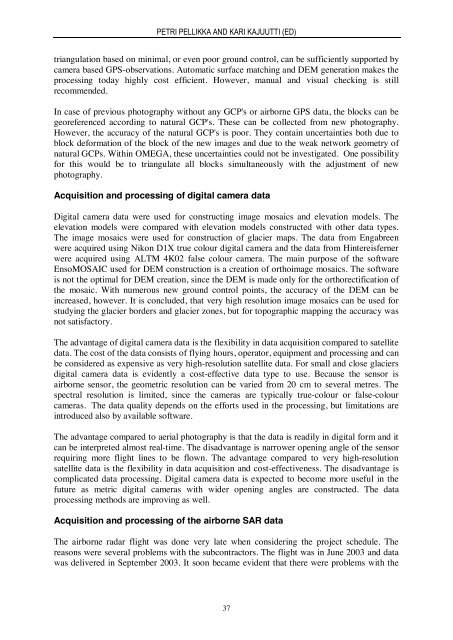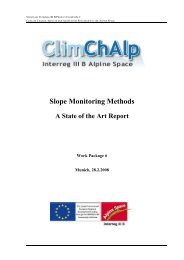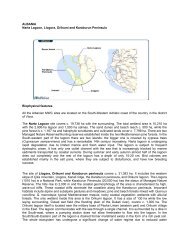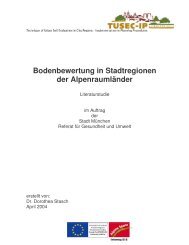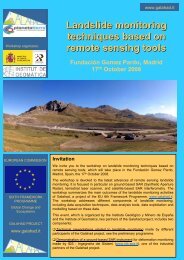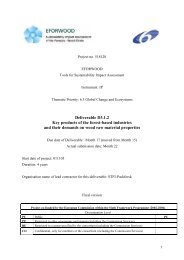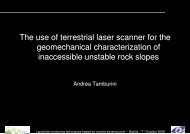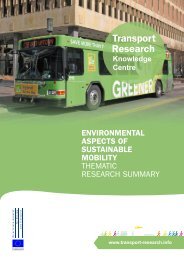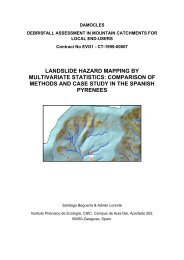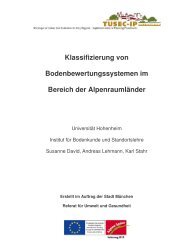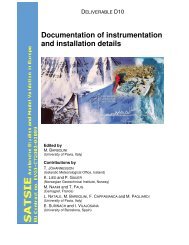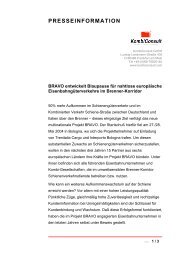1 Background - mountain.PROJECTS
1 Background - mountain.PROJECTS
1 Background - mountain.PROJECTS
You also want an ePaper? Increase the reach of your titles
YUMPU automatically turns print PDFs into web optimized ePapers that Google loves.
PETRI PELLIKKA AND KARI KAJUUTTI (ED)triangulation based on minimal, or even poor ground control, can be sufficiently supported bycamera based GPS-observations. Automatic surface matching and DEM generation makes theprocessing today highly cost efficient. However, manual and visual checking is stillrecommended.In case of previous photography without any GCP's or airborne GPS data, the blocks can begeoreferenced according to natural GCP's. These can be collected from new photography.However, the accuracy of the natural GCP's is poor. They contain uncertainties both due toblock deformation of the block of the new images and due to the weak network geometry ofnatural GCPs. Within OMEGA, these uncertainties could not be investigated. One possibilityfor this would be to triangulate all blocks simultaneously with the adjustment of newphotography.Acquisition and processing of digital camera dataDigital camera data were used for constructing image mosaics and elevation models. Theelevation models were compared with elevation models constructed with other data types.The image mosaics were used for construction of glacier maps. The data from Engabreenwere acquired using Nikon D1X true colour digital camera and the data from Hintereisfernerwere acquired using ALTM 4K02 false colour camera. The main purpose of the softwareEnsoMOSAIC used for DEM construction is a creation of orthoimage mosaics. The softwareis not the optimal for DEM creation, since the DEM is made only for the orthorectification ofthe mosaic. With numerous new ground control points, the accuracy of the DEM can beincreased, however. It is concluded, that very high resolution image mosaics can be used forstudying the glacier borders and glacier zones, but for topographic mapping the accuracy wasnot satisfactory.The advantage of digital camera data is the flexibility in data acquisition compared to satellitedata. The cost of the data consists of flying hours, operator, equipment and processing and canbe considered as expensive as very high-resolution satellite data. For small and close glaciersdigital camera data is evidently a cost-effective data type to use. Because the sensor isairborne sensor, the geometric resolution can be varied from 20 cm to several metres. Thespectral resolution is limited, since the cameras are typically true-colour or false-colourcameras. The data quality depends on the efforts used in the processing, but limitations areintroduced also by available software.The advantage compared to aerial photography is that the data is readily in digital form and itcan be interpreted almost real-time. The disadvantage is narrower opening angle of the sensorrequiring more flight lines to be flown. The advantage compared to very high-resolutionsatellite data is the flexibility in data acquisition and cost-effectiveness. The disadvantage iscomplicated data processing. Digital camera data is expected to become more useful in thefuture as metric digital cameras with wider opening angles are constructed. The dataprocessing methods are improving as well.Acquisition and processing of the airborne SAR dataThe airborne radar flight was done very late when considering the project schedule. Thereasons were several problems with the subcontractors. The flight was in June 2003 and datawas delivered in September 2003. It soon became evident that there were problems with the37


